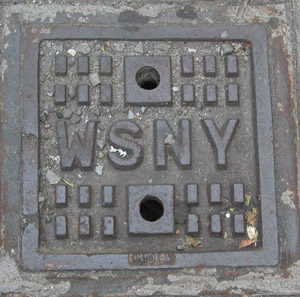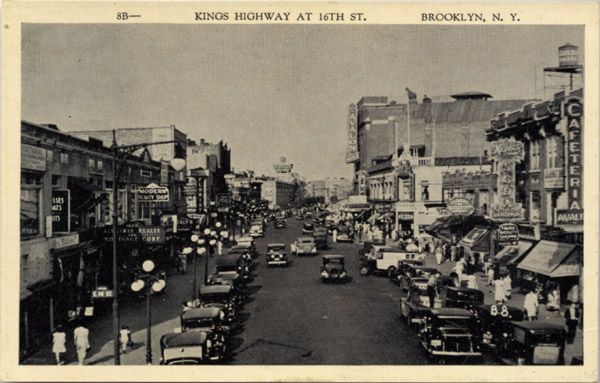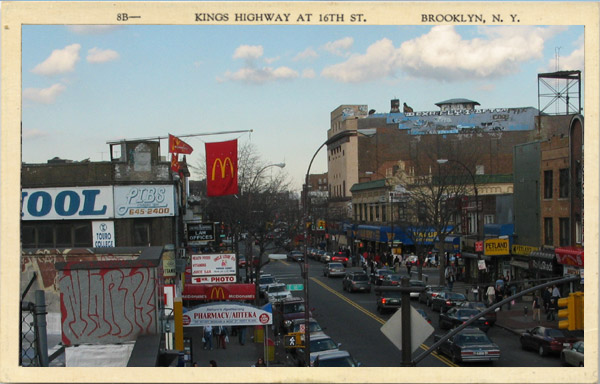sometimes it feels like I shift into alternate universes. Here’s one where a Nynex ad for call waiting coexists with a Kindle. We’re all connected, eh?

Blogging since 2002
My former co-worker, he of the Planet of the Geeks, asked me a few questions about selecting a telescope recently, and inderectly inspired me to write this post.
Backyard astronomy is one of the most popular geek pastimes. Like espresso making and photography, it’s one of those hobbies where there’s basically no limit on how badly it makes you want to break your budget. There are such gadgets, oh such gadgets…
The rule of thumb in purchasing a telescope is the same as in purchasing an espresso machine – “poor people can’t afford to buy cheap things.” I am not going to write a telescope purchasing advice post though – enough is written on the subject already.
What am I going to write about is the motivation for purchasing telescopes, eyepieces and other stuff. Really, why should you want to buy these expensive toys, drag your butt out into the cold of the night and crouch in uncomfortable position when there’s Hubble Space Telescope and Astronomy Picture of the Day?
Well, first off, seeing a high resolution picture of Saturn taken by a billion dollar space probe somehow pales in comparison with seeing a blurry tiny speck of an image produced by the cheapest telescope. There’s something magical about having the actual photons reflecting of or generated by the celestial body hitting your retina. These almost physical things travelled over ridiculous distances end up hitting your eye forming an image. The feeling is completely different.
Most scope advice sites tell beginners to not even think about astrophotography. My advise to you is to disregard this. Astrophotography is one of the most rewarding things you can do. That picture won’t be of Hubble quality, but it will be yours. A detailed mosaic of the lunar surface makes a great wall hanging or wallpaper. Again, there’s something different in the pictures that you took. People don’t stop snapping pictures of New York just because they can buy professionally made postcards, do they? If you do buy a telescope, buy one that can be made suitable for astrophotography.
Note
I don’t own a serious telescope right now, and never did. All I have is an old Celestron C90 spotting scope (actually mine is an older model that looks rather differently. The idea was to use it later as a telephoto lens (which I did) and a spotting scope for a big telescope that I ended up not buying. Even with that, I managed to take this photo of the Moon.

Besides subjective experiences, there’s a very good reason to own your own gear and doing your own observations. The space is so huge that there’s still room for a complete amateur to make a discovery or just gather some useful scientific data.
The humblest in amateur research is doing Cepheid variable observations. You basically record how certain stars change their brightness from night to night. It’s painstaking and boring work, but it helps to chart galactic distances or something to that effect.
On the plus side, while looking for Cepheids, you can spot a nova or even a supernova. Nova discoveries by amateurs are not super frequent, but are not too rare either. Here’s one, for instance.
Another mainstream field of armature research is occultation recording and timing. Occultation is a transit of one celestial body behind another. For instance, you can watch Saturn disappear behind Moon’s disk and reappear again. By watching a bright star or planet pass behind the Moon, for instance, you can get some interesting information. First of all, by recording the time you can help calculate Moon’s orbit more precisely. Secondly, yo can see lunar terrain backlit, seeing outlines of mountains. In theory, something can be learned about atmosphere of planets and maybe even moons by watching occultations, but that requires some serious gear. In any case, space probes do a much better job.
Blah blah, meticulous observations by amateurs, blah, tiny little pieces of data, blah. Let’s kick it up a notch, crank up the hubris. Remember that Simpsons episode where Bart discovered a comet? Although the chances are low and the competition is fierce, it is possible for an amateur to discover a comet. And comets are the only things that are named after their discoverers these days.
They don’t let you name asteroids, but discovering one is rather cool. If you find an Earth orbit crossing one, you can _potentially_ join the Planet Savior club. They’ll name stuff after you then.
If that’s not enough, start looking for a planet. They won’t let you name it too, but putting “found a planet” on your resume is very cool. Of course, there is a lot of debate if those huge Trans-Neptunian objects such as Pluto and 2003 UB313 aka Xena are really planets. I say the more the merrier. Xena is magnitude 19 by the way, which is bright enough to be seen in high end amateur telescopes in dark sky conditions.
There’s also the category of looking for major stuff that most probably isn’t there. Searching for planet Vulcan is likely to be futile, as Einstein explained away Mercury’s orbit.
Major planets probably have way more satellites than are catalogued. It’s probably impossible, but maybe the Moon might have one too? In any case, hunting for satellites might be fun.
Also, you have the Nemeses theory. It might just be that good ol’ Sol is really a binary star (binary stars are much more common than single ones) – Nemeses, it’s partner is a brown dwarf beyond the Oort Cloud. It’s possibly bright enough to be detected with an amateur scope. Now, that would be a discovery.
How do you look for all of that stuff? Well, you mostly line up and “blink” photographic images of the same piece of sky taken at different times. Most stars are so far away that they don’t change their positions. Planets, asteroids and satellites have larger proper motion and appear to move in blinked photos. A lot of them will be artificial satellites and already discovered stuff, but hey – you never know. Public astrophotographs are available for this sort of thing, and there are ways to cheaply rent time on professional telescopes over the web, but it’s not as fun and generating your own.
Even if your scope sucks and you live in a very light polluted place, you can still look for transient Lunar phenomena. Maybe you’ll see some aliens while you are at it.
Forgetting for a second about my gender neutral language skills let’s talk a bit about manhole covers.
In case you haven’t noticed, they come in an amazing variety of shapes, sizes and designs. The designs are often amazingly elaborate and beautiful. Just like I am not the first programmer to be asked “why manholes are round and not square” in an interview, I am not the first person to notice and write about the designs.
Probably the most popular photography book about manhole covers is Manhole Covers by Mimi and Robert Melnick. I have it, and it’s outstanding. This time when I checked at Amazon, there was also Quilting With Manhole Covers – A Treasure Trove of Unique Designs from the Streets of Japan as well as copycats Designs Underfoot and Treasures Underfoot.
Amazon also has these kick ass fake covers for hanging on the wall (as it’s nearly impossible to hang a real 600 lb manhole cover and rim on a wall ).
Just like there’s no shortage of books, there’s no shortage of websites as well. Staring into the hypnotic designs can be very relaxing.
Why did I decide to write about manhole covers today? Simply because New York Post recently ran a story about a somewhat fleshy skateboarder who fell backwards onto an electrified Con Ed manhole cover. That resulted in her getting literally branded with a design on her back. Even a few letters of “Con Edison” are visible:

The girl is lucky – manhole covers are known to shoot high up in the air due to steam buildup– and a flying 600 lb cover could leave a stronger impression.
Also it could be “Made in India” instead of “Con Ed” as most of the new manhole covers are produced there for 25 cent a pound these days. There’s an excellent article about it from which I just have to pull a few choice quotes :
“In India, the making of manhole covers is vastly man’s work – and it has been for generations. “They say the skill can only be done by a man,” Agarwal said. “The molding can never be done by a female.” “
“The progressive nature of an otherwise primitive workplace exhibits itself in other ways. Inspirational sayings written in English are hung throughout the foundry, such as “Quality is free, but it is not a gift.”
Ironically, few workers can read the sign, let alone the names of the cities on the covers they create.”
Now, unless you are a programmer who’s encountered the ubiquitous manhole question, you must be wondering, what’s the right answer to the question? Why aren’t they square? Let me give you a geek’s answer.
First of all they are not all round – there are square, rectangular, hexagonal and other ones. Here’s an example a of a square manhole cover (Note “India” on the bottom). This is a small one, but much bigger ones exist as well, I just can’t find a good example that’s both square and says “India” right now.

The answer they are expecting is that it is impossible to drop a round disk into a round hole of the same size. But there’s also a shape called the Reuleaux triangle that has the same property:

With the help of a Reuleaux triangle shaped bit and a template it’s possible to drill square holes. Unfortunately I can’t seem to find any of these drill bits for sale.
Also, a round manhole cover is easier to roll. Duh. You might also tell the interviewer about my fishing buddy Michael Prior’s echinterview.org and
I came across this postcard recently and could not pass it up even at $16. It shows Kings Highway from the elevated subway platform of the Brighton line. Unfortunately I could not get the same viewpoint because a huge ugly advertising billboard is blocking the view.


The picture clearly (well, maybe not so clearly) shows the Avalon Movie theater, which history you can learn at http://www.cinematreasures.org . Now that building houses a CVS pharmacy on the ground floor and Touro “College” on the upper, windowless floors.
The water tower, cool streetlights, Cafe Avalon, Modern Beauty Shop, Kings Highway Realty and Mortgage Corp, the soda fountain which name I can’t make out, the cool cars — all gone. Parking is still a problem though.
There is a big map of the Moon hanging above my bed. I bought it in Lowell Observatory’s gift shop. It hangs mostly as a decoration, I never spent much time studying it. My knowledge of Selenology is limited to being able to identify sea of Tranquility , sea of Crisis and craters Tycho and Copernicus. I suck.
Yesterday I was looking at the map. And here’s what I learned: right below Sea of Crises are seas of Waves (Undarum), Foam (Spumans) and Fertility (Fecunditatis). On most maps Fecunditatis is translated as “Fecundity“. One more SAT word.
And now – a Rorschach test.

I am planning on reviving Brooklyn College’s observatory. Unfortunately it has been closed for many years. When I asked to see it, I was told that inside everything is covered with pigeon poop and that it’s a health hazard. I never had the time to be more persistent in gaining access there, but maybe this year I’ll find some time. Supposedly there is a 7 inch planetary refractor there. I’ll have to spend some money and time, but it will be less than the price of such a scope, not even counting the fact that it’s in a rotating dome.
I think I’ll spend some time looking for TLPs, even though such research is poo-poohed by most astronomers.
One thing is for sure – I am going to invest in a nice lunar atlas. There are no good Moon maps on the Net.